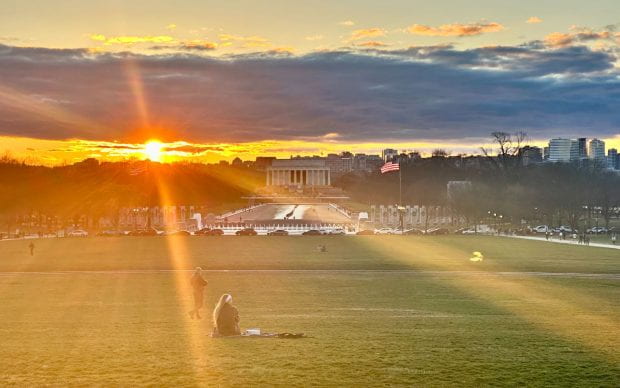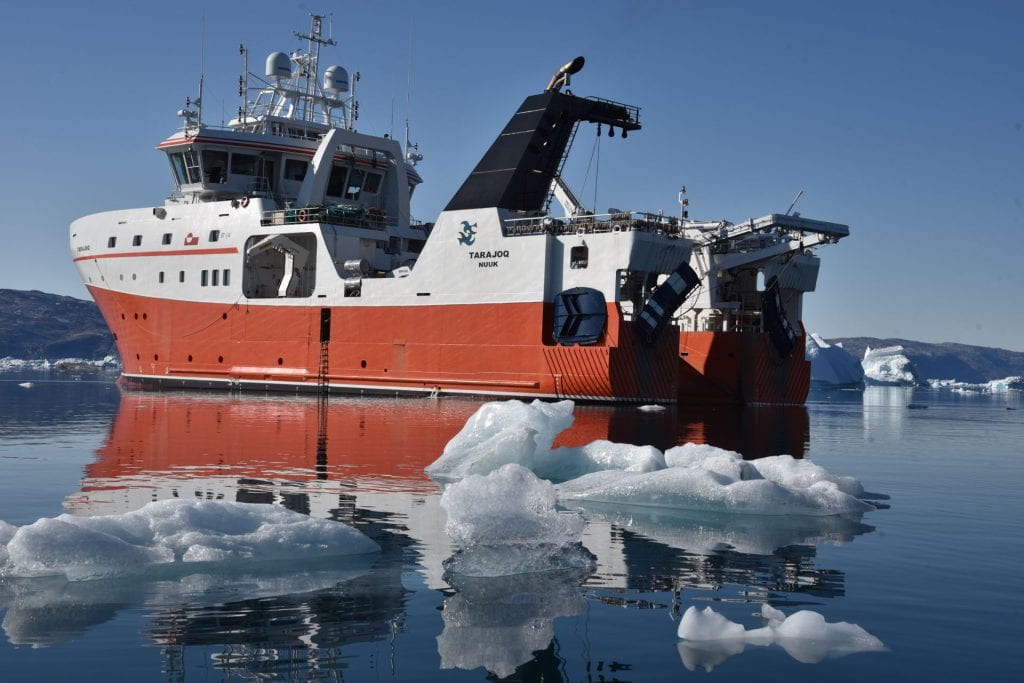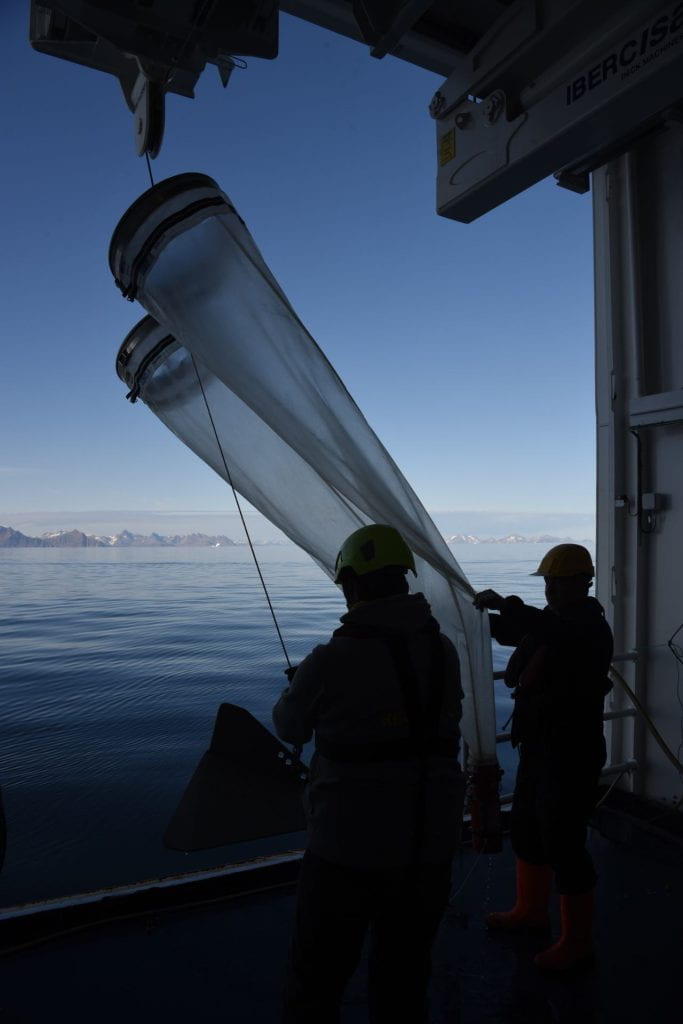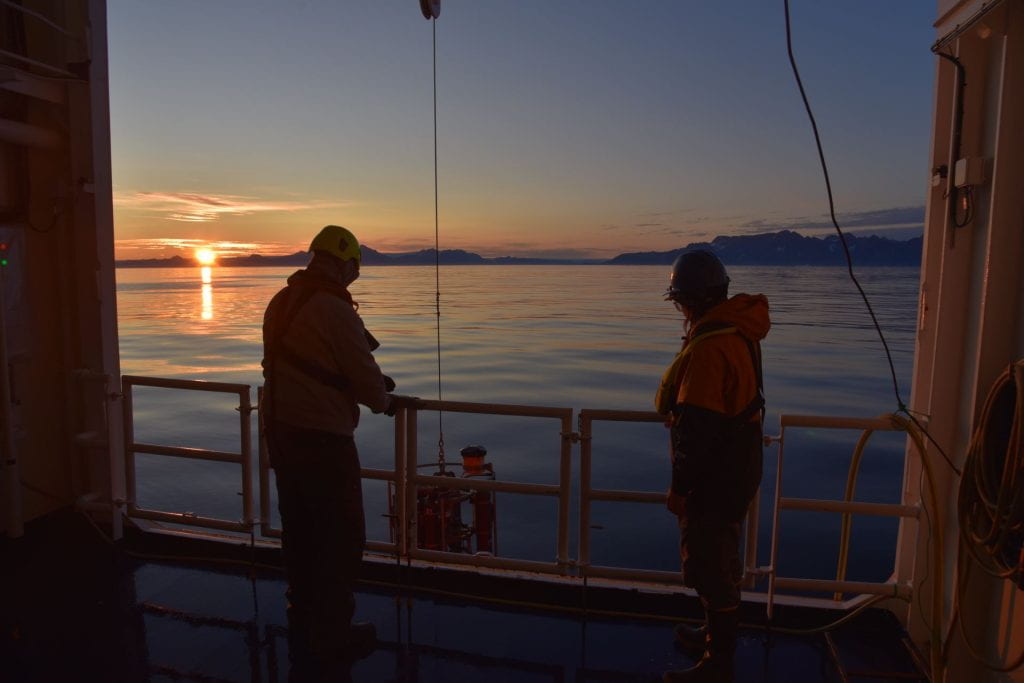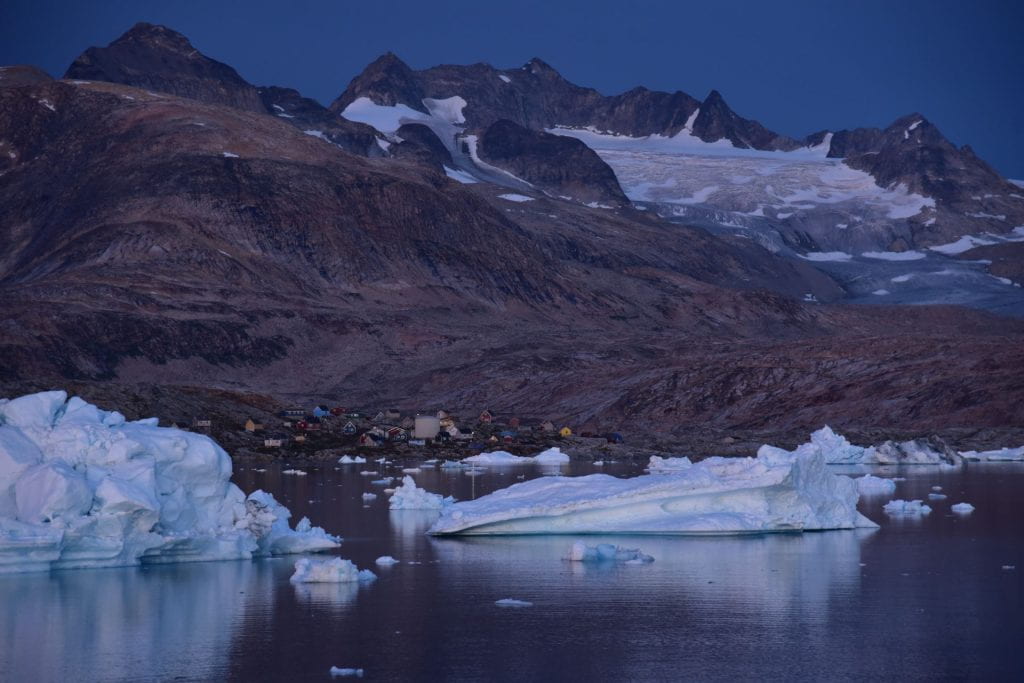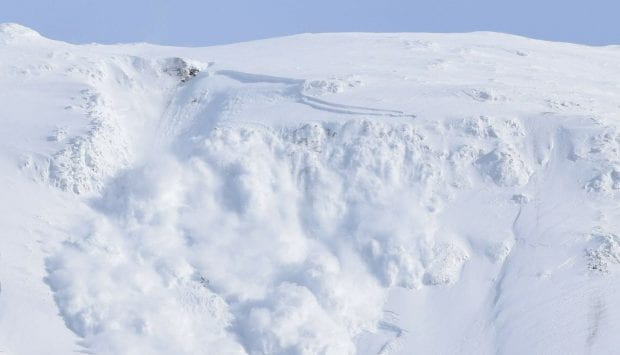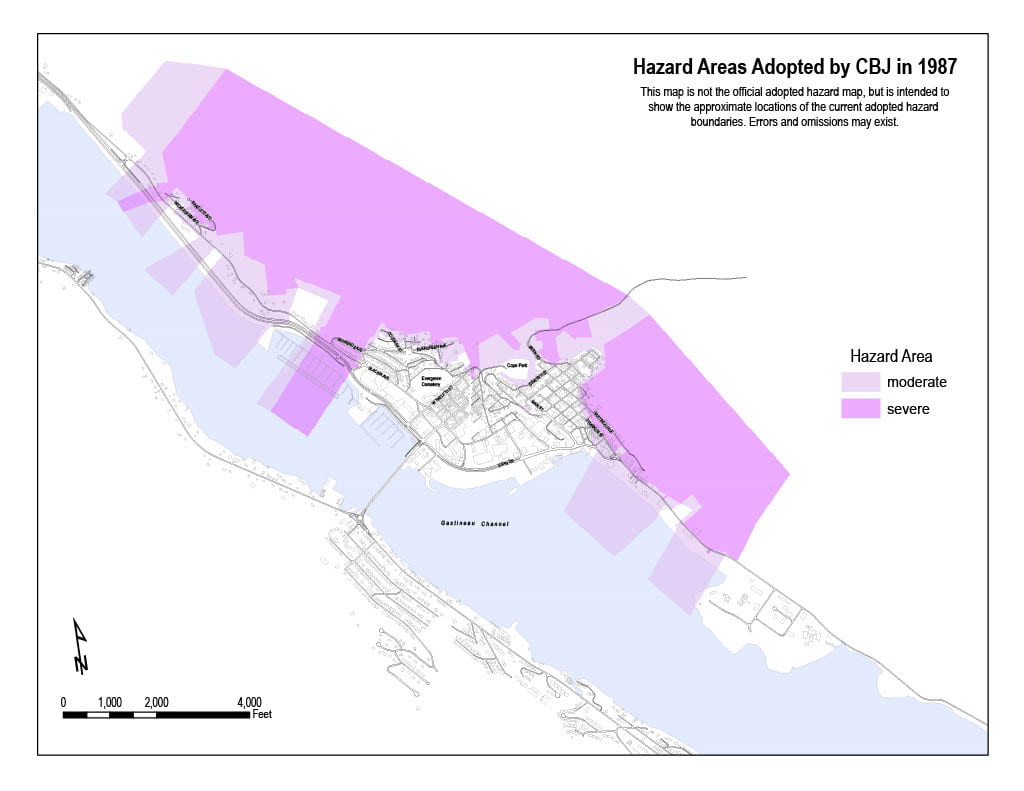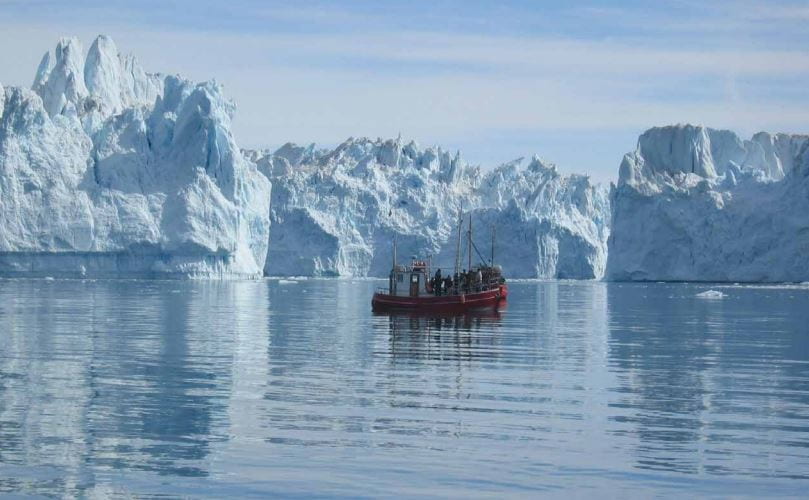In March 2023, members of the Glacier Lab for the Study of Ice and Society traveled to Washington, D.C. for a National Science Foundation (NSF) conference and research at the Library of Congress and National Archives.
First, Glacier Lab director Mark Carey and graduate students Dara Craig, Zachary Provant, Nicole Schaub, and Sijo Smith attended the National Science Foundation’s 2024 Navigating the New Arctic Annual Community Meeting. They were joined by Glacier Lab alum Holly Moulton, who is now an assistant professor as West Virginia University. In addition to learning about knowledge co-creation and groundbreaking Arctic research projects, the Glacier Lab presented two posters at this Navigating the New Arctic (NNA) meeting. Dara Craig and Sijo Smith presented their research and community-oriented work on “Engaging Students in Anticolonial Research for Tribal and Academic Partnerships,” which was funded by a grant from the Andew Mellon Foundation. Mark Carey and Nicole Schaub presented “Framing Greenland Fjords: How US Media Outlets Can Undermine NNA Objectives.” They conducted this research with two Glacier Lab undergraduates, Olivia Black and Mira Cross, and it is part of Carey’s collaborative NSF project studying glacial fjords in Greenland. The NNA conference was a productive opportunity to listen to Indigenous keynote speakers, network with Arctic researchers, and learn more about conducting interdisciplinary NSF research.
Following the NNA conference, Glacier Lab members headed for the archives to conduct research. First, they completed the required trainings to enter the Library of Congress Reading Room. This gave them access to the Bernt Balchen papers—documents that detailed Balchen’s time as a pilot in Greenland. During this archival research, Glacier Lab members were looking for historical documents that discussed Balchen’s interactions with Greenlanders. After wrapping up at the Library of Congress, the Glacier Lab shifted their attention to National Archives I. At this location, they combed through U.S. Coast Guard documents to find early military activity in Greenland. Similar to the Bernt Balchen papers, the Glacier Lab was hunting for documents that illuminated U.S. Coast Guard interactions with Greenlanders—especially near U.S. military bases. This research not only advanced Mark Carey’s collaborative NSF-funded project on Greenland fjords—it also provided the graduate students with an opportunity for training in collaborative archival work.
Beyond the NNA conference and the archival research, the Glacier Lab used the trip to D.C. as an opportunity to spend time together off campus and enjoy the capitol’s culture and history. In the evenings, the groups visited museums, walked the mall, and laughed in underground pubs. Nicole Schaub described it well:
“Sharing this experience was an invaluable opportunity to learn from and work with other Glacier Lab members. From navigating the National Archives, to engaging at the NNA conference, to exploring the sites of the Washington Mall, we worked together in a variety of contexts, strengthening both the academic and the interpersonal bonds that are essential to collaboration.”
